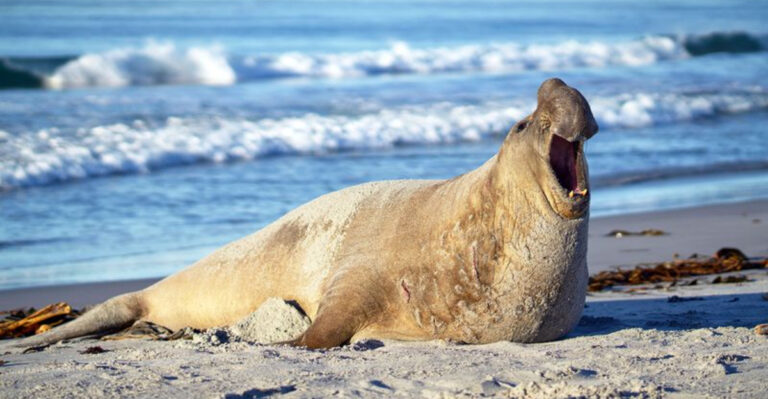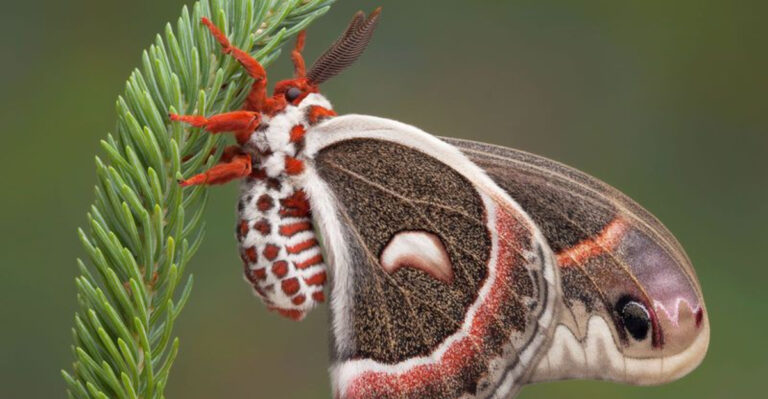10 Friendliest Snakes On Earth (And 5 Feisty Ones That You’d Never Want To Meet)

Snakes often get a bad rap in movies and stories, but many species make surprisingly gentle companions. While some slithery friends are known for their docile nature and calm temperament, others have earned their fearsome reputation through venomous bites or aggressive behavior.
Let’s explore the world of serpents, from the sweetest pet-worthy reptiles to the dangerous species you should admire only from a safe distance.
1. Corn Snake: The Beginner’s Best Friend
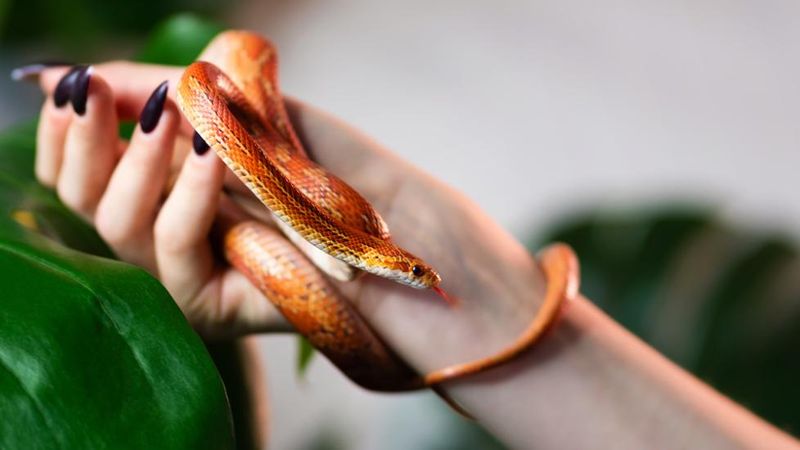
Corn snakes top the list of snake sweethearts with their mellow disposition and reluctance to bite. These colorful reptiles rarely exceed 5 feet, making them manageable for most homes.
Their striking orange and red patterns make them visually appealing, while their easy care requirements win over first-time snake owners. They’re known for being curious rather than confrontational when handled properly.
2. Ball Python: The Cuddly Coiler
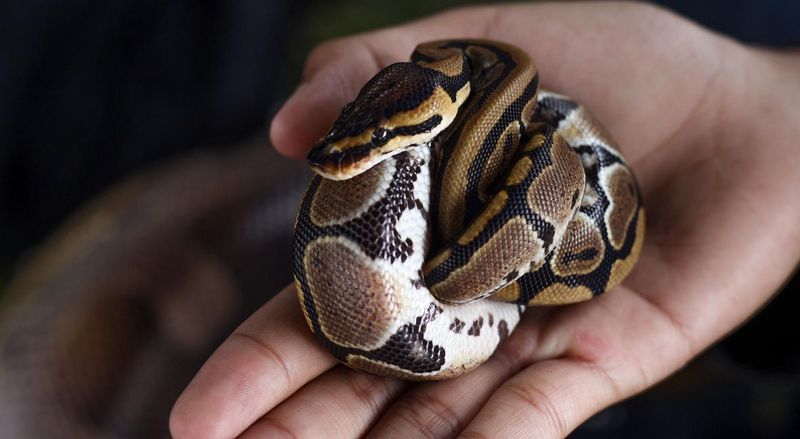
Named for their defensive habit of curling into a ball, these African natives are renowned for their gentle temperament. Ball pythons rarely grow beyond 5 feet, staying manageable throughout their impressive 30-year lifespan.
Their calm nature makes handling a breeze, even for children under supervision. Available in hundreds of color morphs, these snakes combine stunning looks with a personality that’s more shy than scary.
3. Rosy Boa: The Laid-Back Lounger
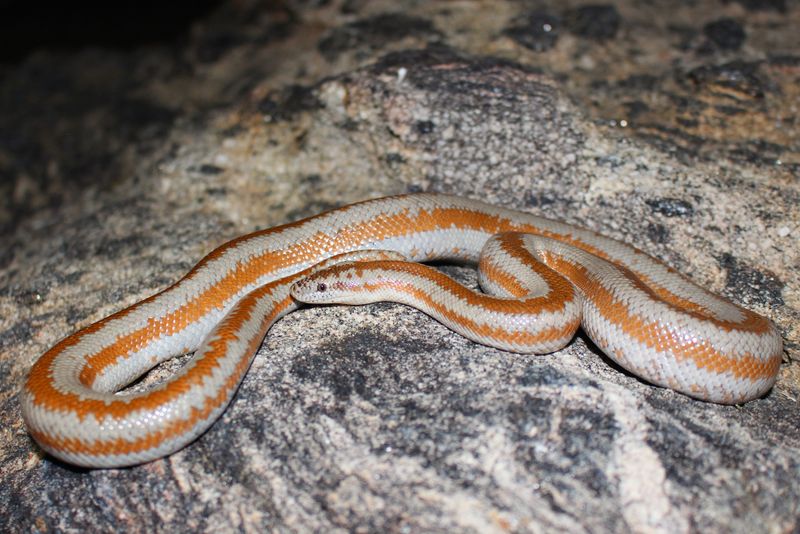
Rosy boas embody reptilian relaxation with their slow-moving nature and reluctance to strike. Native to southwestern deserts, these snakes rarely exceed 3 feet, making them perfect apartment companions.
Their striking tricolor pattern of cream, brown, and rusty-red bands adds visual appeal. What truly sets them apart is their remarkably gentle disposition – they’ll often remain completely calm during handling rather than attempting escape.
4. Kenyan Sand Boa: The Pocket-Sized Pal
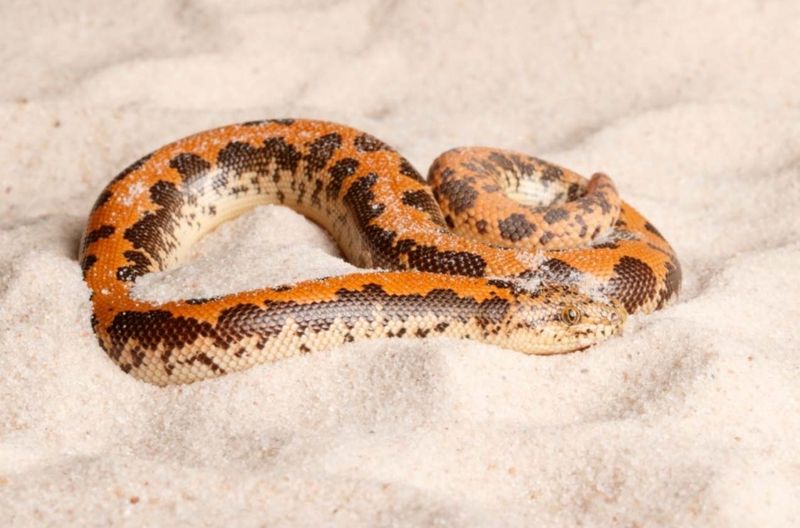
Measuring just 2 feet at maturity, Kenyan sand boas pack plenty of personality into their diminutive frames. These burrowing specialists spend most of their time partially submerged in substrate, with just their eyes and nose poking out.
Their stocky bodies and adorable round eyes give them an undeniably cute appearance. Despite their ambush-predator nature in the wild, they rarely show aggression toward handlers, preferring to explore curiously instead.
5. Garter Snake: The Backyard Buddy

Many snake enthusiasts began their reptile journey after encountering these common garden visitors. Garter snakes adapt remarkably well to captivity despite their wild origins.
Their slender bodies feature attractive stripes running lengthwise, and they rarely exceed 3 feet. While they might release a musky scent when startled, they quickly become accustomed to gentle handling and may even seek out their owner’s warmth.
6. California Kingsnake: The Confident Companion
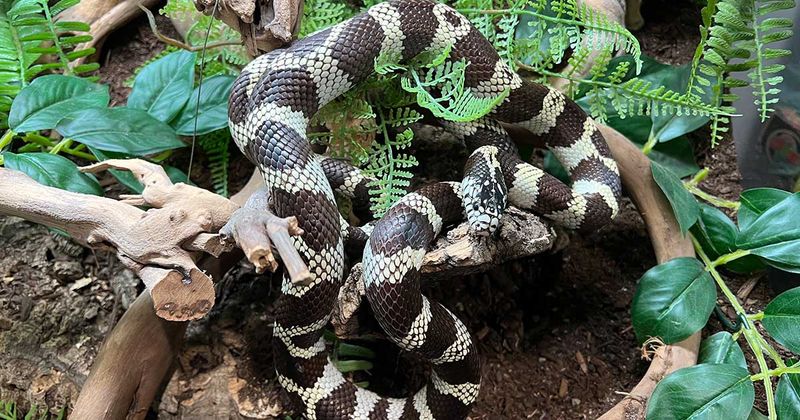
California kingsnakes combine striking looks with a remarkably calm temperament. Their bold patterns of alternating dark and light bands make them visually stunning, while their confidence during handling makes them excellent pets.
These snakes are natural-born hunters that even prey on other snakes, including rattlesnakes! Despite this fearsome feeding habit, they typically show zero aggression toward humans who handle them regularly, responding with curiosity rather than fear.
7. Children’s Python: The Aptly Named Amigo
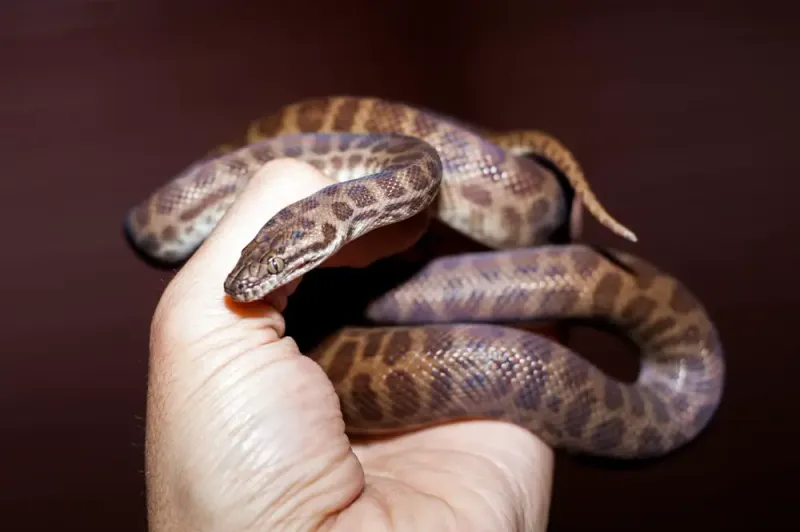
Don’t let the name fool you – these Australian pythons weren’t named for being kid-friendly (though they certainly are). Named after John George Children, a British museum curator, these compact pythons rarely exceed 3 feet.
Their attractive olive-brown coloration features subtle patterns that shimmer in sunlight. What owners truly appreciate is their remarkably docile nature – even wild-caught specimens quickly acclimate to handling with minimal defensive behavior.
8. Ringneck Snake: The Miniature Mild-Mannered
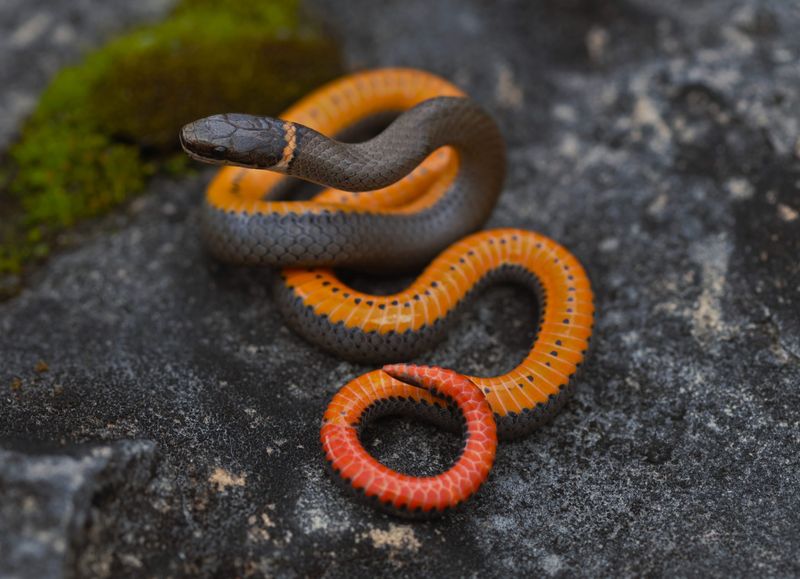
Among North America’s tiniest serpents, ringneck snakes rarely grow beyond 15 inches. Their dark bodies contrasted with vibrant orange-yellow neck rings and matching belly give them delightful visual appeal.
These diminutive reptiles prefer hiding under logs and rocks in the wild. While technically mildly venomous, their rear-fanged delivery system poses zero threat to humans. Instead of biting when handled, they typically curl their tails into a corkscrew shape – a harmless defensive display.
9. Hognose Snake: The Dramatic Darling

With upturned snouts resembling tiny pig noses, hognose snakes win the charm contest. When threatened, they perform an elaborate bluffing routine – flattening their necks, hissing loudly, and striking with closed mouths.
If this theatrical display fails, they roll over and play dead with remarkable commitment! Despite their dramatic nature, they rarely bite humans, preferring their amphibian prey. Their quirky personality and manageable size make them beloved pets for those appreciating reptilian character.
10. Milk Snake: The Colorful Charmer

Milk snakes evolved to mimic venomous coral snakes with their striking red, black, and yellow bands – but they’re completely harmless bluffers. This clever evolutionary strategy helps them avoid predators in the wild.
Captive-bred specimens quickly shed their shy nature, becoming confident and curious companions. Their moderate size (typically 3-4 feet) and minimal space requirements make them practical pets. Remember the rhyme: “Red touches black, friend of Jack; red touches yellow, kill a fellow.”
11. Black Mamba: The Lightning-Fast Lethal
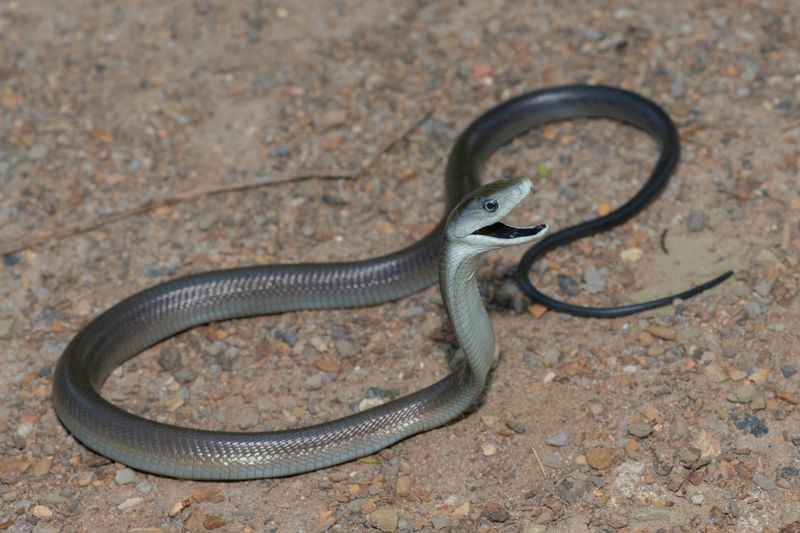
Black mambas hold the title of Africa’s deadliest snake with venom that can kill within hours. Their name comes not from their exterior color (typically olive or grayish) but from their inky-black mouth lining, visible when they’re threatened.
Capable of reaching speeds up to 12mph, they can literally chase down threats. Their aggressive temperament means they don’t hesitate to strike repeatedly when cornered. Without antivenom, their neurotoxic bite proves fatal in nearly 100% of cases.
12. King Cobra: The Regal Menace
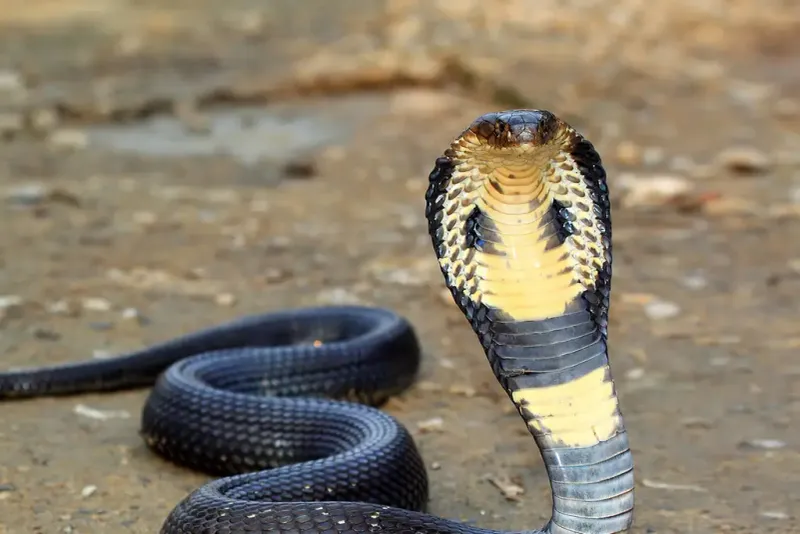
As the world’s longest venomous snake (reaching 18 feet), king cobras command respect through sheer size alone. When threatened, they raise the front third of their body vertically, flare their distinctive hood, and emit a bone-chilling hiss that sounds almost like a growl.
Unlike most snakes, king cobras build nests for their eggs and fiercely guard them. Their intelligence makes them especially dangerous – they remember threats and can track humans who’ve disturbed them, sometimes pursuing for remarkable distances.
13. Russell’s Viper: The Silent Assassin
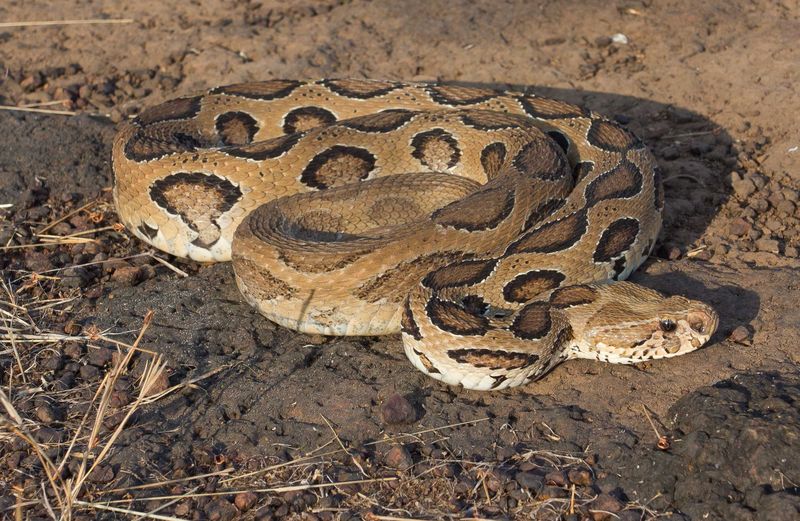
Responsible for more human deaths than nearly any other snake, Russell’s vipers combine deadly venom with a hair-trigger temperament. Their beautiful tan body adorned with dark brown spots belies their deadly nature.
These ambush predators lie motionless for hours, exploding into action when prey (or an unsuspecting human) approaches. Their venom contains toxins that not only destroy tissue but also cause catastrophic bleeding throughout the body. Rural farmers in India and Southeast Asia frequently encounter them during fieldwork.
14. Bushmaster: The Rainforest Reaper
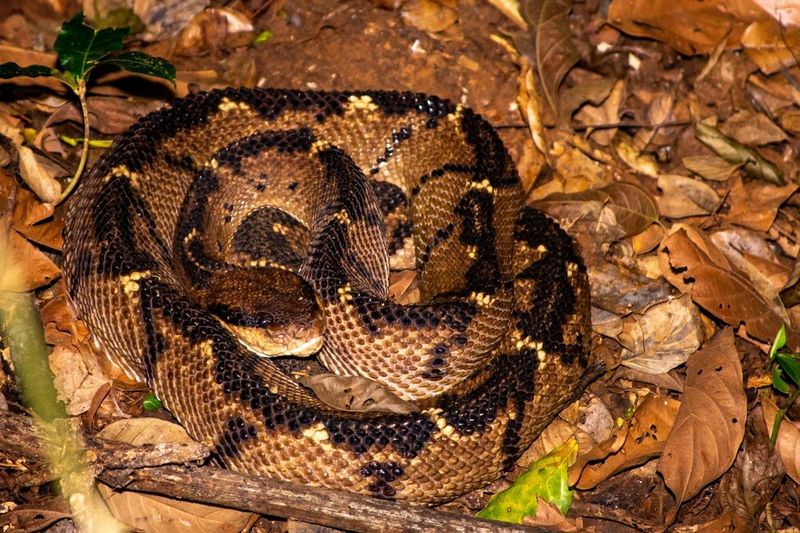
South America’s largest pit viper strikes fear with its massive size – approaching 10 feet long – and aggressive disposition. Bushmasters pack enough venom in a single bite to kill 10 people, delivered through fangs nearly as long as a tiger’s claws.
Unlike many snakes that flee human encounters, bushmasters sometimes stand their ground and pursue perceived threats. Their cryptic coloration makes them nearly invisible against forest floors. Local names like “silent death” reflect their reputation for delivering fatal surprise attacks.
15. Inland Taipan: The Toxic Champion

Australia’s inland taipan holds the title of world’s most venomous snake, with toxicity 50 times greater than a cobra’s. A single bite contains enough venom to kill 100 adult humans, attacking the nervous system, blood, and muscles simultaneously.
Fortunately, these brown-colored killers live in remote areas and typically avoid human contact. Unlike their aggressive coastal cousins, inland taipans prefer retreat over confrontation. Their shy nature has prevented many human fatalities despite their unmatched venom potency.

